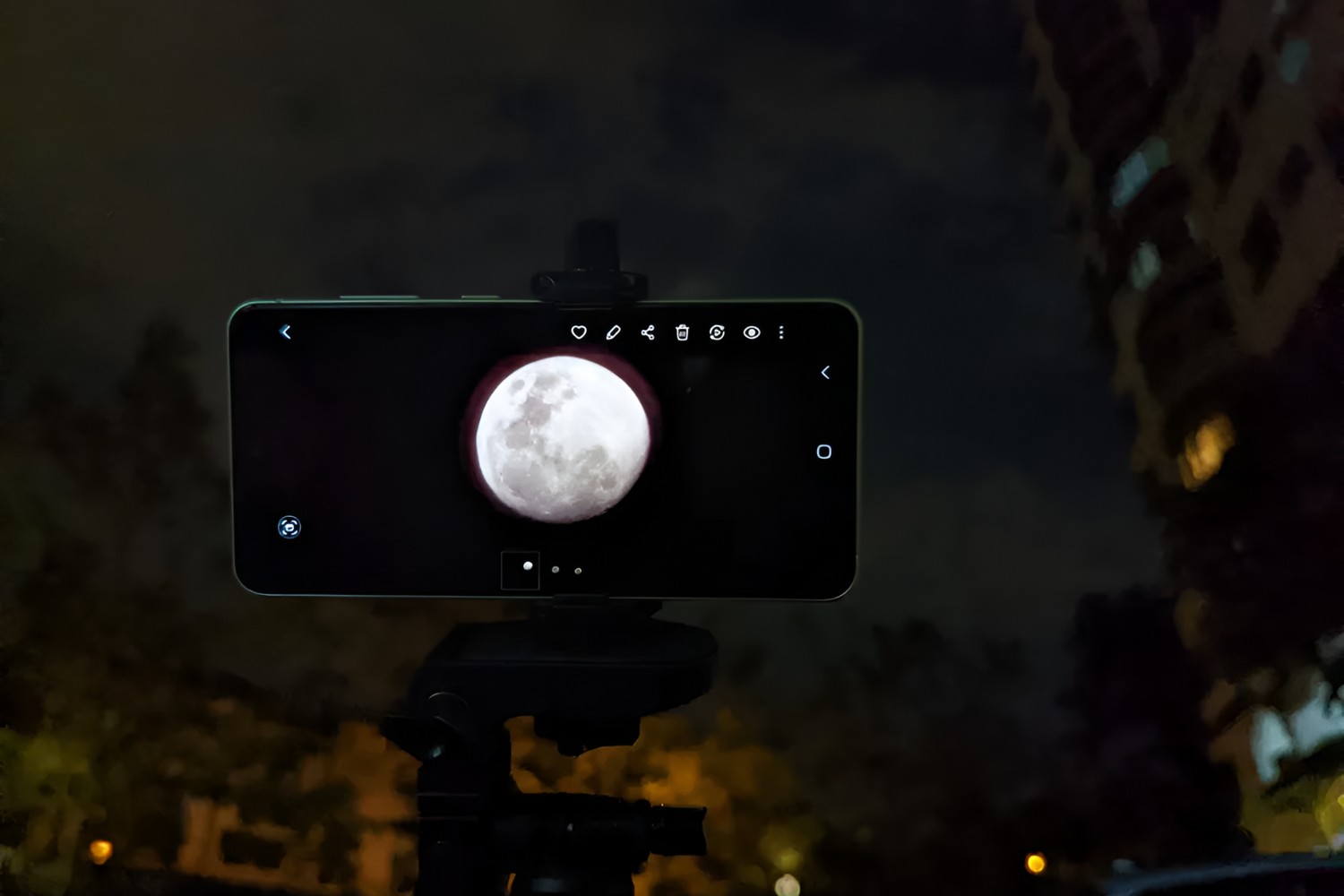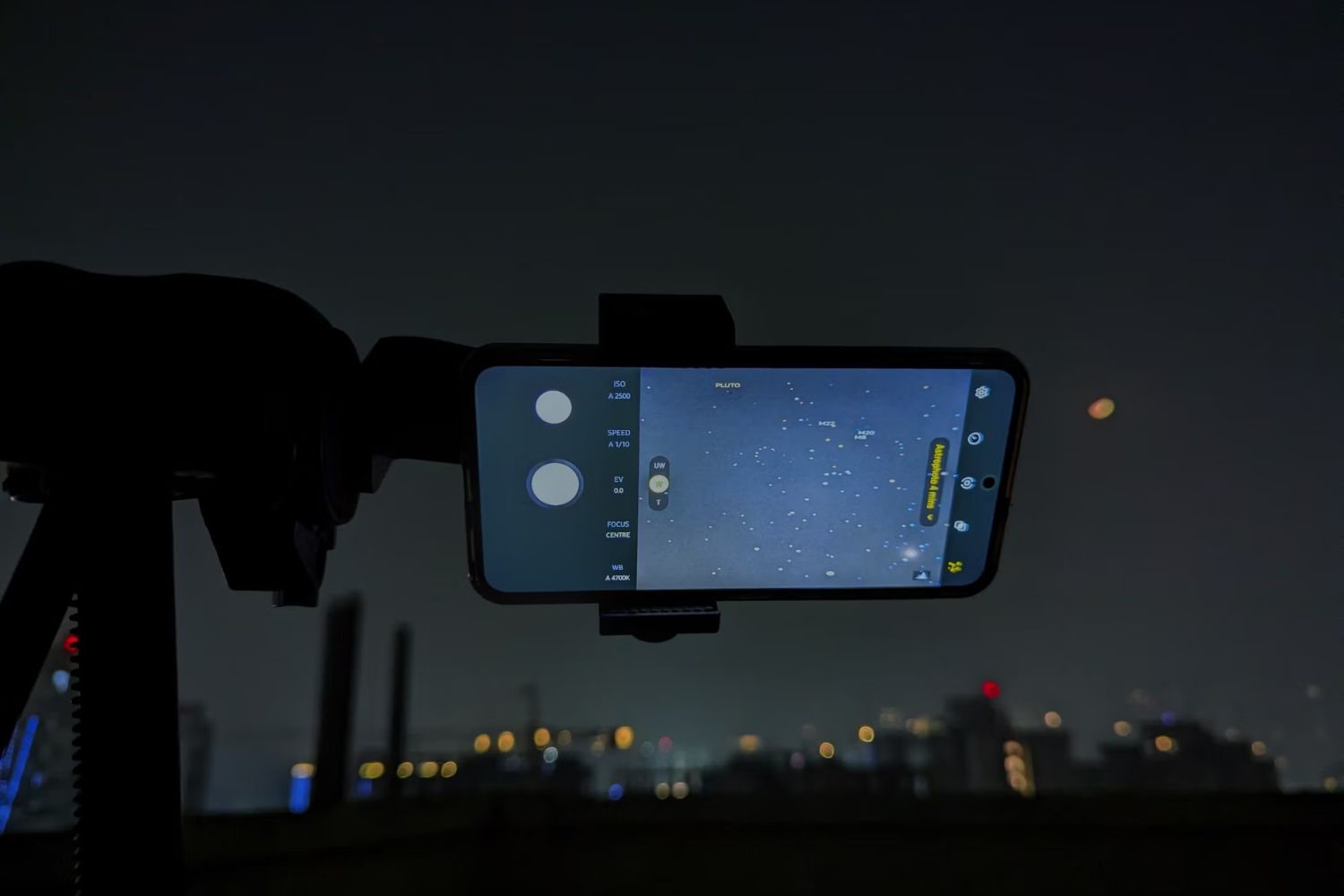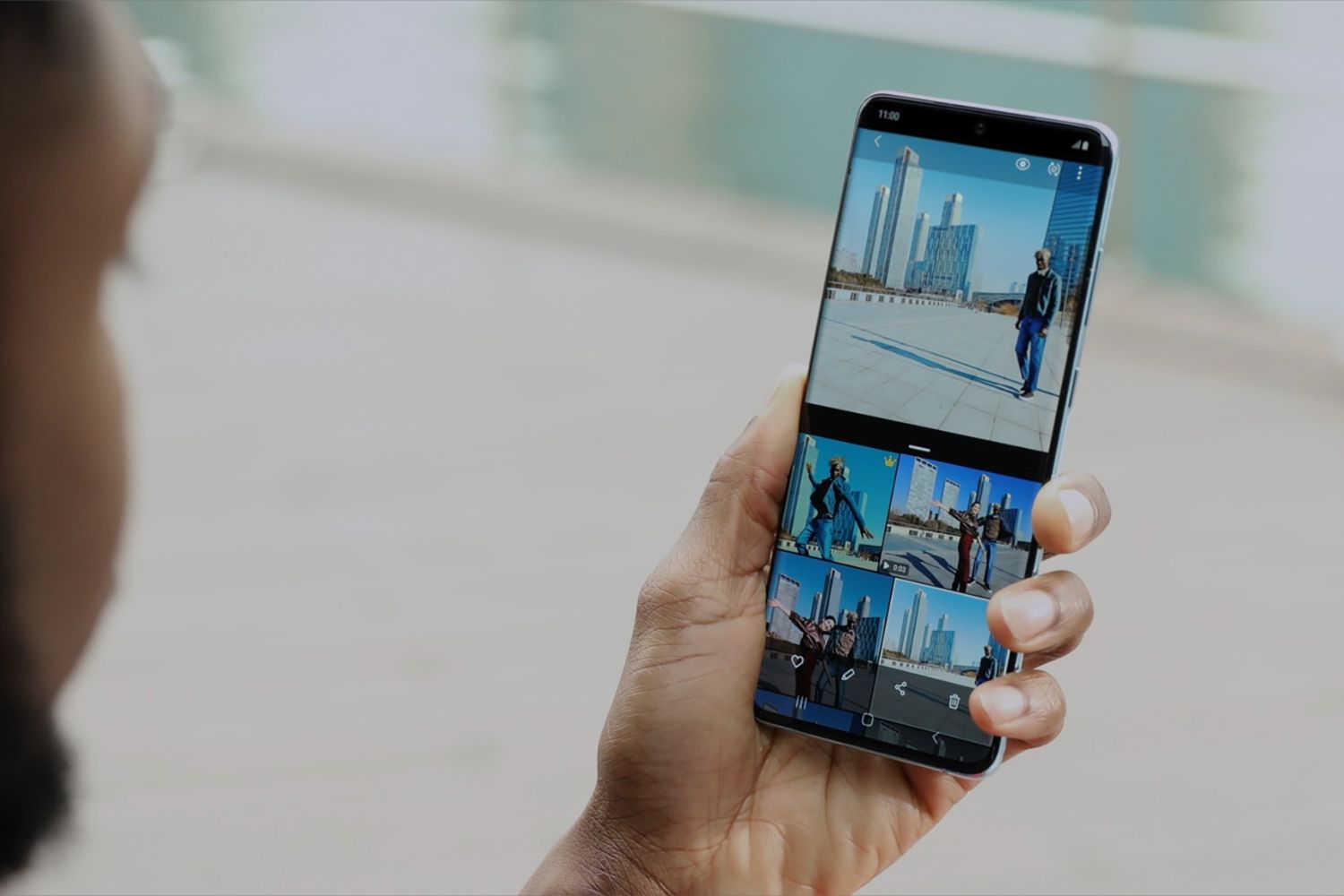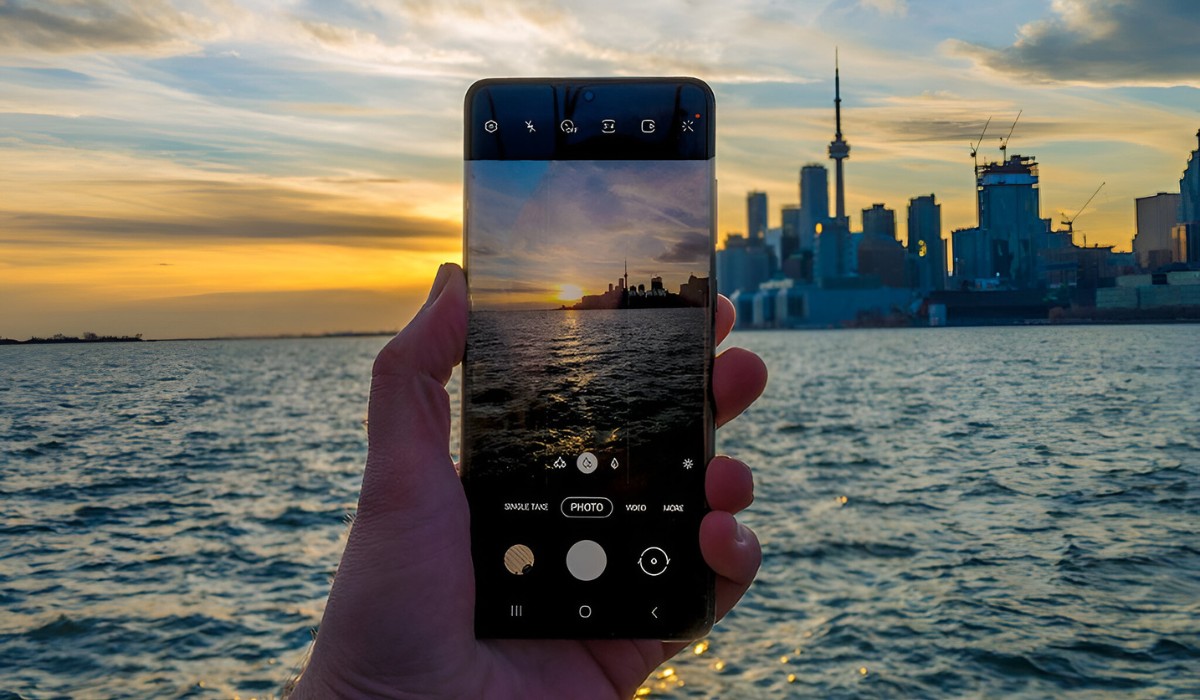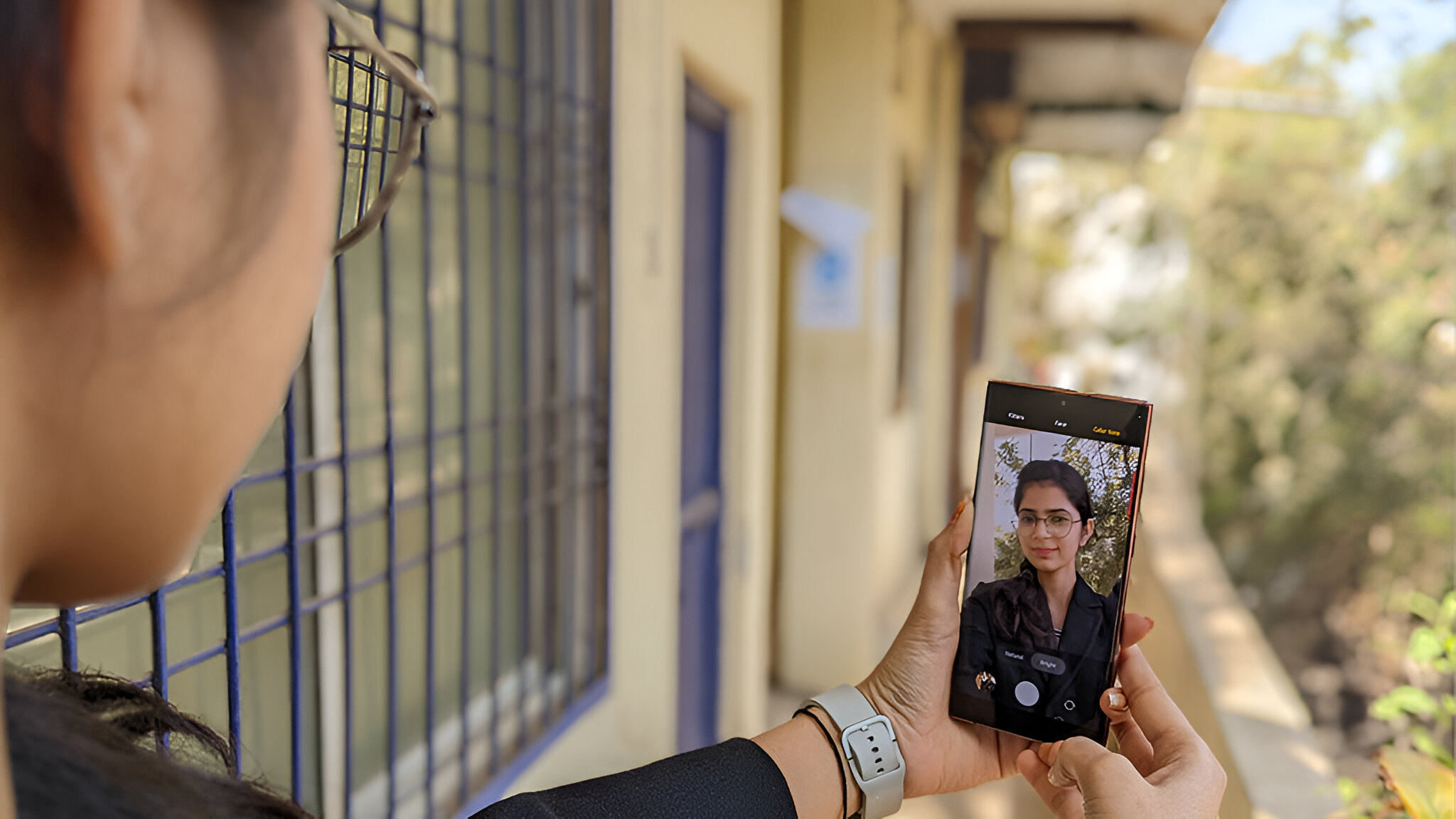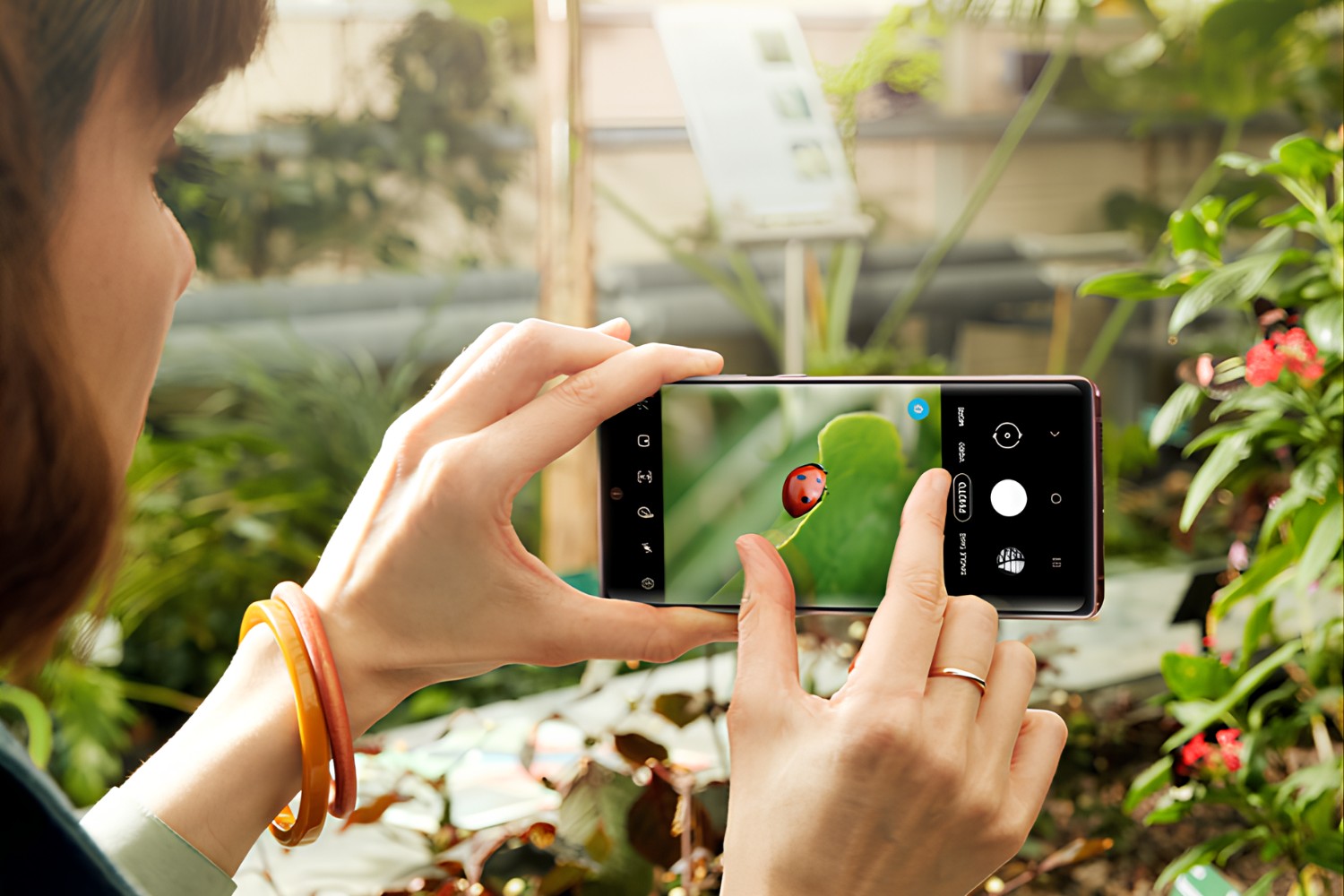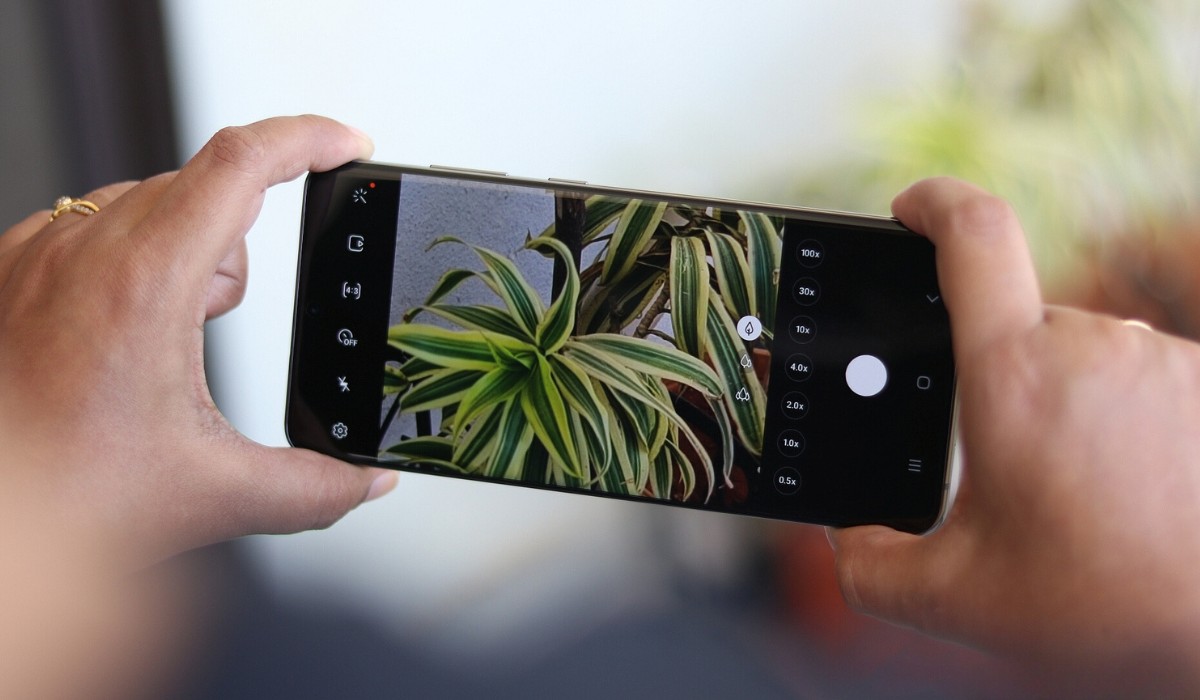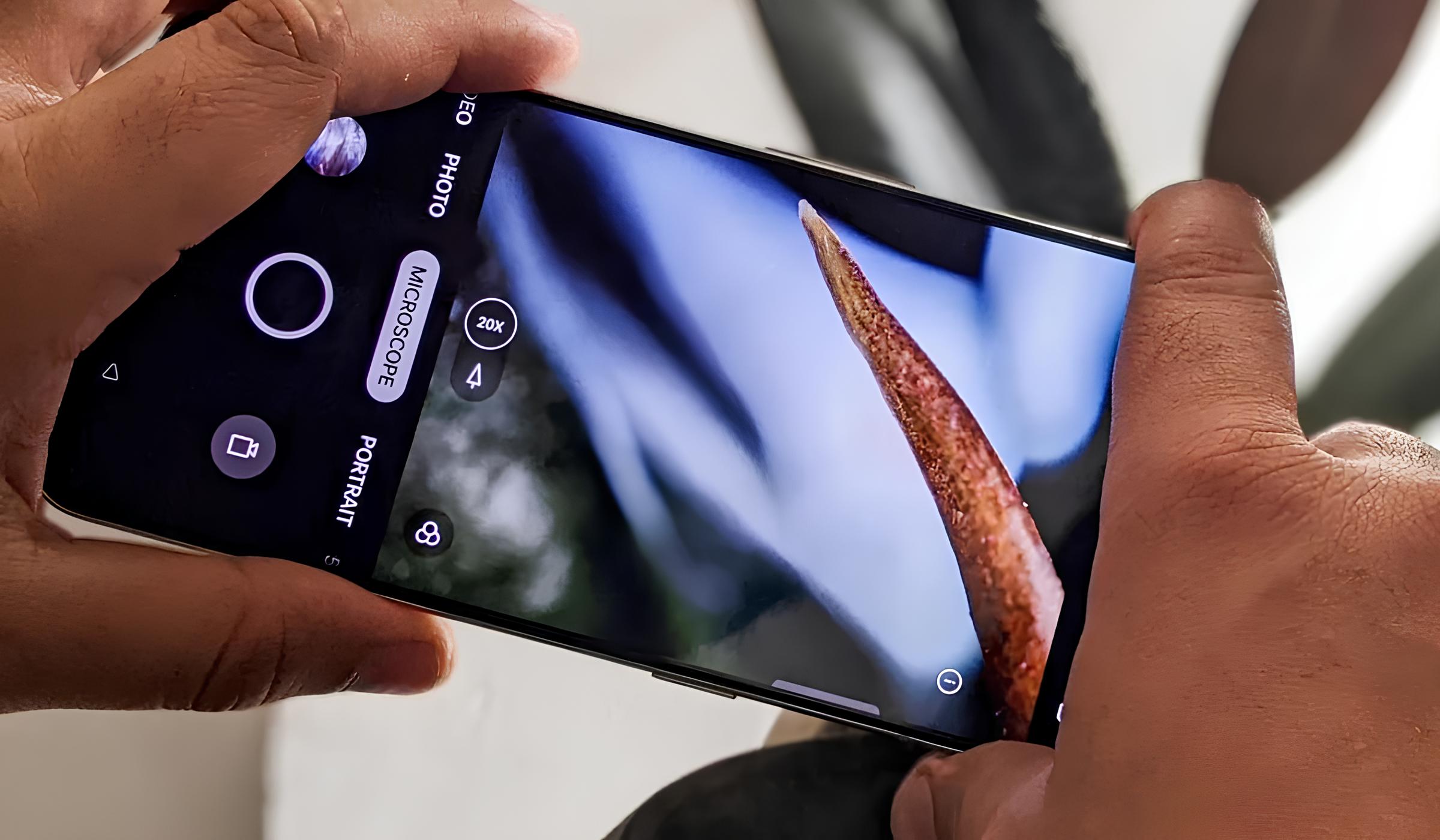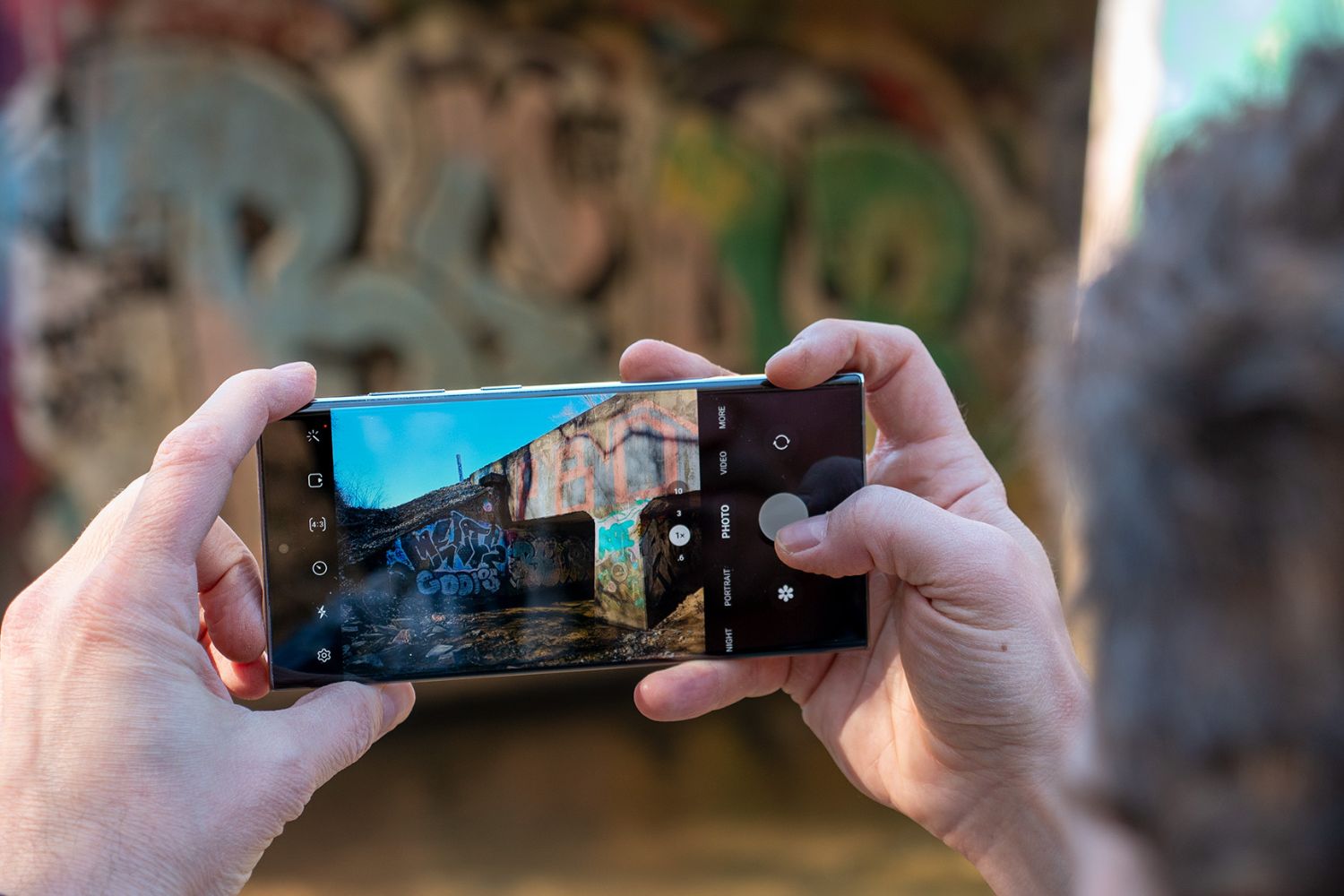Introduction
Welcome to the fascinating world of moon photography with the Samsung S20 camera! Capturing the moon in all its celestial glory can be a truly mesmerizing experience, and with the advanced features of the Samsung S20, you have the power to immortalize the beauty of the moon like never before.
The Samsung S20 boasts a powerful camera system that enables you to delve into the realm of astrophotography with ease. Whether you're an amateur photographer or a seasoned pro, the Samsung S20's camera capabilities offer a wealth of opportunities to capture stunning lunar images.
In this comprehensive guide, we will explore the intricacies of moon photography using the Samsung S20, providing you with valuable insights and practical tips to elevate your photography skills. From understanding the unique features of the Samsung S20 camera to mastering the art of capturing the moon in various phases, this guide will equip you with the knowledge and techniques needed to unleash your creativity and capture breathtaking lunar moments.
So, grab your Samsung S20, and let's embark on an exhilarating journey into the enchanting realm of moon photography. Get ready to unlock the full potential of your Samsung S20 camera and immerse yourself in the captivating world of lunar photography. Whether you're gazing at the radiant full moon or capturing the subtle details of a crescent moon, the Samsung S20 is your gateway to capturing the celestial beauty that graces our night skies.
Join us as we delve into the intricacies of moon photography, uncovering the secrets to capturing stunning lunar images with the Samsung S20. Let's embark on this celestial adventure together and unleash the full potential of your Samsung S20 camera!
Understanding the Samsung S20 Camera
The Samsung S20 is equipped with a cutting-edge camera system that redefines the boundaries of mobile photography. At the heart of this innovative device lies a powerful triple-camera setup, comprising a 12-megapixel ultra-wide lens, a 12-megapixel wide-angle lens, and a 64-megapixel telephoto lens. This trifecta of lenses empowers photographers to capture a diverse range of subjects with exceptional clarity and detail.
One of the standout features of the Samsung S20 camera is its advanced low-light performance, which is particularly advantageous for moon photography. The camera's large image sensor and sophisticated image processing capabilities enable it to excel in low-light conditions, making it well-suited for capturing the moon's ethereal glow against the night sky.
Furthermore, the Samsung S20 boasts a host of intelligent camera features, including Pro Mode, which grants users granular control over settings such as ISO, shutter speed, and white balance. This level of manual control is invaluable for astrophotography, allowing photographers to fine-tune their camera settings to achieve optimal results when capturing the moon and other celestial bodies.
In addition to its hardware prowess, the Samsung S20's camera is bolstered by AI-powered software enhancements that elevate the overall photography experience. The device leverages artificial intelligence to optimize image quality, enhance details, and mitigate noise, resulting in stunning, true-to-life photographs.
The Samsung S20's camera interface is designed with user-friendliness in mind, offering intuitive controls and a plethora of shooting modes to cater to diverse photography preferences. From Single Take mode, which captures a variety of photo and video formats in a single press of the shutter button, to Night mode, which enhances low-light photography, the Samsung S20 empowers photographers to unleash their creativity with ease.
With its impressive array of camera capabilities and intelligent features, the Samsung S20 stands as a formidable tool for moon photography. Whether you're an avid stargazer or a photography enthusiast seeking to immortalize the moon's enchanting allure, the Samsung S20 camera is primed to deliver exceptional results, empowering you to capture the celestial wonders that adorn the night sky.
Tips for Capturing the Moon
Capturing the moon in all its celestial splendor requires a blend of technical prowess, creative vision, and an understanding of the nuances of lunar photography. Whether you're aiming to photograph the radiant full moon or the delicate details of a crescent moon, the Samsung S20 empowers you to immortalize these captivating lunar moments with finesse. Here are essential tips to elevate your moon photography endeavors with the Samsung S20:
1. Embrace the Power of Zoom:
The Samsung S20's telephoto lens, with its impressive 3x optical zoom and advanced image stabilization, enables you to bring the moon closer to your lens with remarkable clarity. By leveraging the telephoto lens, you can capture intricate details of the moon's surface, including craters and lunar maria, resulting in awe-inspiring photographs that showcase the moon's mesmerizing topography.
2. Leverage Night Mode for Enhanced Clarity:
When capturing the moon in low-light conditions, activate the Night mode feature on your Samsung S20 to enhance image clarity and reduce noise. Night mode harnesses the power of multi-frame processing and intelligent noise reduction algorithms to produce stunning moonlit images with exceptional detail and minimal distortion, ensuring that the moon's luminous beauty is faithfully preserved in your photographs.
3. Optimize Exposure Settings:
Experiment with exposure settings to achieve the perfect balance of brightness and detail in your moon photographs. Adjust the exposure compensation to fine-tune the overall brightness of the image, ensuring that the moon's radiance is captured in all its glory without appearing overexposed or underexposed. Additionally, consider bracketing exposures to capture a series of shots at varying exposure levels, providing you with a range of options to select the ideal moonlit masterpiece.
4. Emphasize Composition and Framing:
When composing your moon shots, consider incorporating elements of the surrounding landscape or celestial objects to add depth and context to your photographs. Experiment with different framing techniques, such as juxtaposing the moon against silhouetted trees or architectural structures, to create visually compelling compositions that accentuate the moon's celestial presence within the earthly realm.
5. Harness Pro Mode for Precision Control:
Engage Pro Mode on your Samsung S20 to unlock granular control over essential camera settings, including ISO, shutter speed, and white balance. Pro Mode empowers you to tailor the camera's parameters to suit the specific requirements of moon photography, allowing you to achieve optimal exposure and sharpness while capturing the moon in its various phases and luminosities.
By implementing these tips and leveraging the advanced capabilities of the Samsung S20 camera, you can embark on a captivating lunar photography journey, capturing the moon's enchanting allure with unparalleled finesse and creativity. Let your imagination soar as you explore the celestial realm and immortalize the moon's timeless beauty through the lens of your Samsung S20.
Using Manual Mode for Moon Photography
Engaging the manual mode on your Samsung S20 camera unveils a realm of creative possibilities, allowing you to exercise precise control over essential exposure settings and capture the moon in all its celestial splendor. By harnessing the power of manual mode, you can tailor the camera's parameters to suit the unique demands of moon photography, ensuring that each lunar image reflects your artistic vision with unparalleled clarity and detail.
Fine-Tuning Exposure Settings
In manual mode, you have the flexibility to adjust crucial exposure settings, including ISO, shutter speed, and aperture, to achieve optimal results when photographing the moon. Start by setting the ISO to its base value, typically ISO 100 or 200, to minimize digital noise and preserve image quality. Next, experiment with different shutter speeds to determine the ideal exposure duration for capturing the moon's luminous glow. A slower shutter speed can accentuate the moon's radiance and reveal intricate surface details, while a faster shutter speed may be necessary to prevent overexposure, especially during the full moon's brilliance.
Mastering White Balance
White balance plays a pivotal role in lunar photography, influencing the color temperature and overall tonality of your moonlit images. In manual mode, you can fine-tune the white balance settings to achieve accurate color reproduction and evoke the ethereal ambiance of moonlit scenes. Consider adjusting the white balance towards cooler tones to accentuate the moon's silvery luminescence, or experiment with subtle shifts in color temperature to imbue your lunar photographs with a captivating visual allure.
Leveraging Long Exposure Techniques
Manual mode empowers you to delve into the realm of long exposure photography, a technique that can yield breathtaking results when capturing the moon against the night sky. By extending the exposure duration, you can create mesmerizing long-exposure shots that showcase the moon's graceful trajectory across the celestial canvas, imbuing your photographs with a sense of dynamism and celestial grandeur. Experiment with varying exposure durations to craft captivating long-exposure compositions that encapsulate the moon's timeless allure.
Embracing Artistic Expression
Beyond technical precision, manual mode invites you to infuse your moon photography with a touch of artistic expression. Explore unconventional compositions, experiment with creative framing, and embrace the interplay of light and shadow to craft evocative lunar images that transcend the ordinary. By embracing the creative freedom afforded by manual mode, you can imbue your moonlit photographs with a sense of wonder and artistic resonance, capturing the moon's enigmatic beauty through a lens of boundless creativity.
Incorporating manual mode into your moon photography endeavors empowers you to transcend the confines of automatic settings, unlocking a realm of artistic exploration and technical mastery. With the Samsung S20's manual mode as your ally, you can embark on a captivating lunar photography odyssey, capturing the moon's timeless allure with precision, creativity, and an unwavering commitment to immortalizing the celestial wonders that grace our night skies.
Editing Moon Photos on the Samsung S20
Once you've captured stunning moonlit images with your Samsung S20, the journey continues as you venture into the realm of post-processing and editing. The Samsung S20's robust suite of editing tools empowers you to refine and enhance your moon photos, elevating them to new heights of visual splendor. Whether you're aiming to accentuate the moon's ethereal glow, fine-tune exposure levels, or infuse your images with a touch of artistic flair, the editing capabilities of the Samsung S20 offer a wealth of creative possibilities.
Harnessing Pro-Grade Editing Tools
The Samsung S20's integrated photo editing interface provides access to a comprehensive array of pro-grade editing tools, allowing you to exert precise control over every aspect of your moon photos. From fine-tuning exposure and contrast to adjusting color balance and saturation, the editing tools empower you to sculpt your moonlit images with meticulous attention to detail, ensuring that each photograph reflects your artistic vision with unparalleled fidelity.
Embracing Selective Adjustments
With the Samsung S20's selective adjustment tools, you can target specific areas of your moon photos for nuanced enhancements. Whether you seek to accentuate the intricate details of the moon's surface or refine the luminosity of its radiant glow, selective adjustments enable you to apply localized edits with surgical precision, ensuring that every aspect of your moonlit images is meticulously refined to perfection.
Unleashing Creative Filters and Effects
The Samsung S20's editing suite features an array of creative filters and effects that allow you to imbue your moon photos with a captivating visual allure. From monochromatic renditions that evoke a sense of timeless elegance to dynamic effects that infuse your images with a touch of artistic expression, the creative filters and effects empower you to transform your moonlit photographs into captivating works of visual art, each imbued with its own unique emotive resonance.
Preserving Image Fidelity with Non-Destructive Editing
The Samsung S20's non-destructive editing workflow ensures that your original moon photos remain untouched, preserving their pristine image quality and allowing you to experiment with creative edits without fear of irreversible alterations. This non-destructive approach to editing empowers you to explore diverse editing techniques and styles, secure in the knowledge that your original moonlit images remain unaltered, ready to serve as the foundation for your creative endeavors.
Showcasing Your Lunar Masterpieces
Once you've meticulously edited your moon photos to perfection, the Samsung S20's seamless sharing capabilities enable you to showcase your lunar masterpieces with the world. Whether you choose to share your captivating moonlit images on social media platforms, create stunning photo galleries, or immortalize your work in printed form, the Samsung S20 empowers you to share the celestial beauty of the moon with an audience that spans the globe.
In the realm of moon photography, the journey doesn't end when the shutter closes. With the Samsung S20 as your creative ally, the post-processing phase becomes a captivating odyssey of artistic exploration and visual refinement, culminating in a collection of moonlit images that transcend the ordinary and evoke the timeless allure of the celestial realm. Harness the editing prowess of the Samsung S20 to breathe new life into your moon photos, and let the radiance of the moon shine forth in all its resplendent glory.







